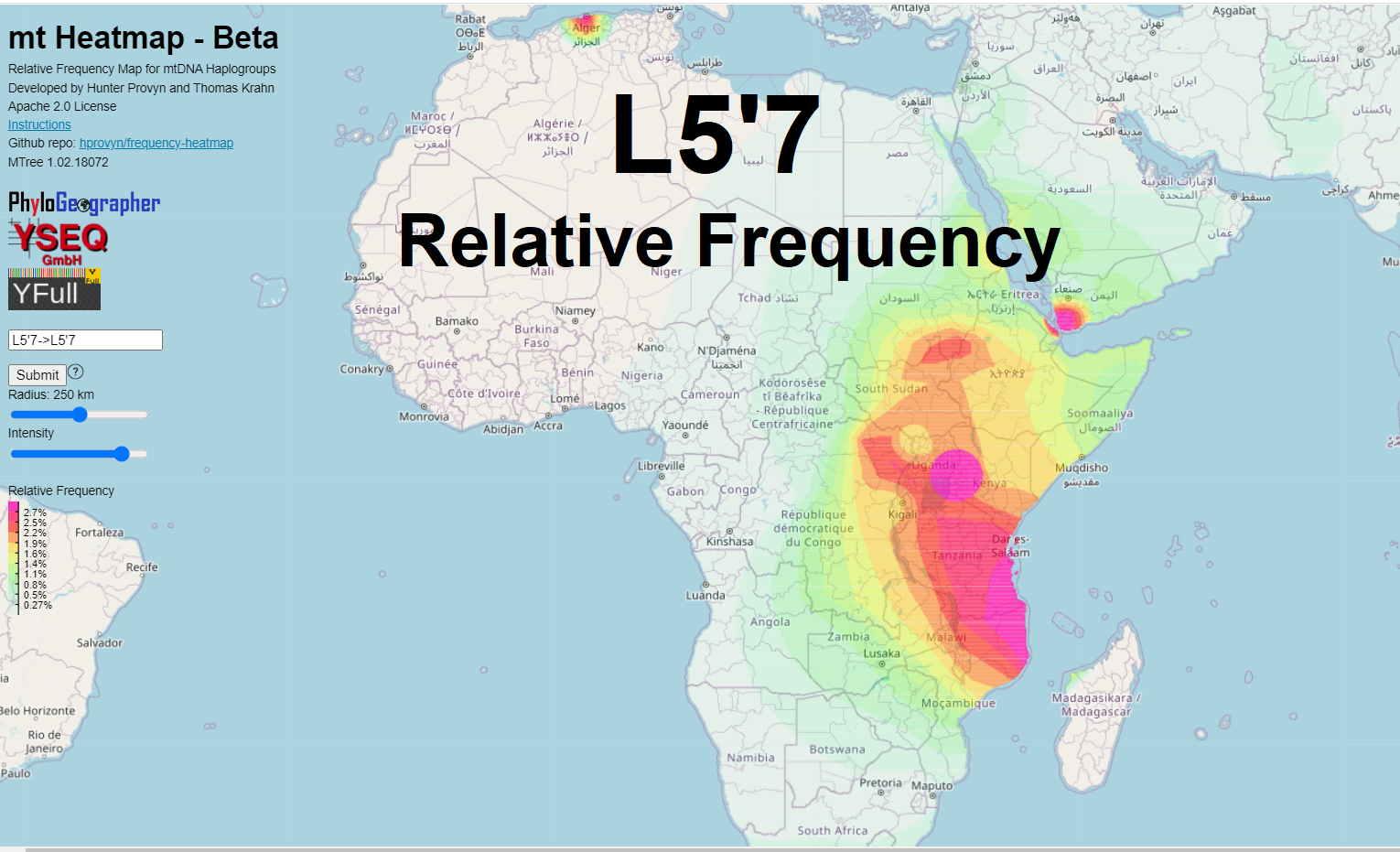mt Clade Finder (you can upload your mtDNA FASTA file to learn about your female line)
YFull mtDNA analysis (to add your sample to the tree and contribute your geography to future heatmap updates)
28 New Regional Codes
These codes appear for the first time on either the YTree or MTree. That means that with this update, I looked up each region and assigned it a central point location to be used in computing my maps.
For regions greater than 10,000 km2, I also look up and store the area so that my mapping software will know to assign a larger radius of less intensity for such geocoded samples.
AG-08 Saint Philip
AR-Y Jujuy
BG-25 Targovishte
BO-C Cochabamba
BO-N Pando
BS-LI Long Island
CO-AMA Amazonas
DZ-23 Annaba
FR-78 Yvelines
FR-92 Hauts-de-Seine
GN-C Conakry
IN-LD Lakshadweep
KR-28 Incheon Gwang'yeogsi
LV-042 Jēkabpils novads
LV-067 Ogres novads
LV-087 Salaspils novads
MA-BES Ben Slimane
MK-814 Центар
MX-ROO Quintana Roo
PA-2 Coclé
PE-APU Apurímac
PH-05 Bicol
RO-CS Caraș-Severin
RO-CV Covasna
SI-102 Radovljica
TD-BG Baḩr al Ghazāl
TH-22 Chanthaburi
TR-49 Muş
L5'7 on YFull MTree
https://www.yfull.com/mtree/L5'7/

Earlier this year, researchers discovered that a maternal line mostly found in East Africa was positive for some mutations defining L5 but negative for others.
Maier, Runfeldt, Estes, Vilar 2022
This result required updating the mtDNA tree.
Now there is a branch called L'5'7 that represents the most recent common ancestor of both L5 and L7. In their paper, the researchers estimated that this common ancestor lived about 100,000 years ago.
The fact that both L5 and L7 are today more frequent in East Africa south of the Horn of Africa could reflect a more southern geographic origin and/or be indicative of female line replacement across part of the original range by farming groups or other later arrivals from Western Asia.
I want to point out that the paper's map indicates L5 peaking in Congo. The authors may have access to some samples not yet on the YFull MTree and/or these samples may be missing the appropriate geocode on MTree.
I notice by looking at the mt Heatmap a sample from Algeria that is L5a*, meaning it is not closely related to any of the other samples in L5a. This could potentially be indicative of a prehistoric migration through what some have described as temporary green corridors through the Sahara, if this split predates the African humid period that started 14,600 years ago.
We will have a better idea of when the Algerian's maternal line ancestor migrated to Algeria once a related sample is found and who knows where their mother came from in Africa or elsewhere.